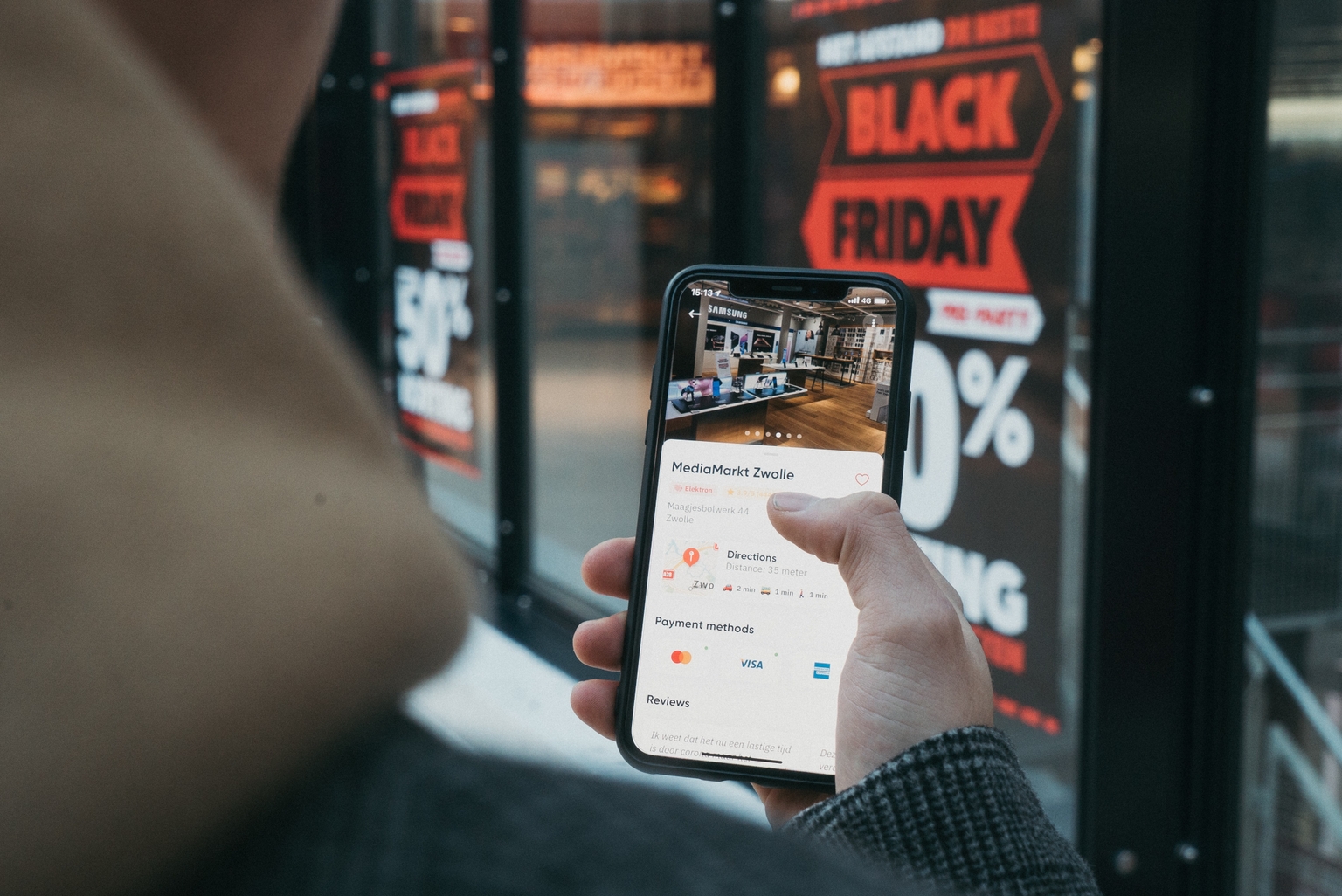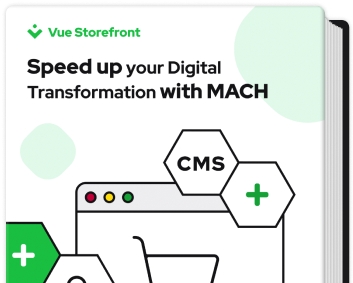Explore by Category:
Headless Commerce
Omnichannel is essential in retail. How Headless Commerce helps to embrace it
Synchronizing sales channels brings measurable benefits to sellers and buyers. The modern customer is becoming increasingly demanding. They want unlimited access to information, fast action, and offers tailored to individual needs. To meet their expectations and at the same time improve the way things work in the industry, online shops are implementing the omnichannel strategy with the significant help of Headless CMS .
Omnichannel is here to stay, as kind of a post-pandemic balance
Changing customer behavior in the pandemic has forced sellers to think much harder and invest much faster in developing a multi-channel reach and customer service strategy. Customer behavior has also changed. Online channels now serve a broader purpose: they are an essential tool for researching, comparing prices, and finding the right deals before deciding whether to leave the house or buy online.
The pandemic will pass. But will shoppers return to brick-and-mortar stores? Recent months have shown that consumers need both online and offline activities. It is becoming increasingly important for customers to combine different sales channels freely. Probably never in history have we had to deal with such an intensification of the omnichannel demand.
Pandemic fueled eCommerce, but brick-and-mortar stores do not cease to exist
It is a time of tremendous acceleration in the development of eCommerce. New buyers appeared on the web - e-shopping was embraced by those who had used this opportunity occasionally as they were forced to do so due to restrictions.
According to the Nielsen study, only 9% of global consumers shopped online regularly before the pandemic. In 2020, 27% started e-shopping for the first time. In May, 44% said they do it every week, and 23% said they do it several times a week.
eCommerce has taken center stage in merchants' interests, but focusing just on digital channels is flattening the whole issue as brick-and-mortar stores do not cease to exist.
So what is the future for traditional stores, and how the interactions with customers will look like? Many physical stores will probably transform themselves into showrooms or pickup/service locations, or their owners will redesign them for small logistics centers so the pickup of goods will be smoother. An interesting pandemic phenomenon was also the growth of small physical shops - from 7% to 9%. It resulted from small stores becoming very popular in emergencies and seemed to be a safer choice. They mostly gained importance because people did not want to go to big stores with queues and meet more people.
It's about combining the worlds on- and off-line, not just choosing one
The activity of brick-and-mortar stores will not be less important. The group of consumers who spend 100 percent of their budget online is really negligible. Therefore, accelerated digitization will lead to omnichannel sales (especially in the grocery segment), probably more frequent use of shopping apps, purchases from saved e-shopping lists, home deliveries, and in-store pick-ups.
Interestingly, the constraints resulting from the pandemic have influenced the need to spend time together outside the home. So shopping malls or brick-and-mortar stores have become a gathering place, replacing closed schools or restaurants. Online stores still do not match brick-and-mortar stores in the presentation of their products, nor do they fulfill a social function.
Such "inclusivity" is good for digital-native brands and for traditional brands, and it is not a new approach
Omnichannel was not born in a pandemic, but its benefits and advantages were clearly evolving. The concept of omnichannel was first introduced to the marketing world in 2010. The term was developed to describe a shopping experience that transcends multi-channel retail and emphasizes the need to keep a consistent experience across the channels.
Even though many sellers still assume that since online selling is a global enterprise, to synchronize eCommerce with brick-and-mortar retail, you must have an equally global network of retail stores. Nothing could be more wrong - in fact, it is enough to implement omnichannel even if you have only one physical store - after all, for example, the possibility of personal pickup can convince a customer who lives in our city to buy from you and not from another online store. Also, the possibility of filing a complaint online will strengthen us in your local market and give you an advantage over our competitor brick and mortar, which does not offer such a possibility.
The pandemic has significantly accelerated the digitization of many businesses in the retail sector, and this trend continues. The number of digital touchpoints with consumers is growing, and with it, the need to precisely align shopping channels tailored to the specifics of individual consumer segments/generations. The buying process may start in a brick-and-mortar or online store, in the app or on the brand's social media profile. On the other hand, the delivery of the product in a traditional store can occur immediately after the purchase, but also at a later stage, depending on the chosen form.
Although it is crucial, the omnichannel strategies can’t solely focus on the point of purchase. That’s not enough.
Here is what makes you omnichannel
Omnichannel is not just another tactic. It's a whole way of thinking about sales and marketing. The presence and consistency of the brand image in every channel available to the user should give them a sense of stability and shorten the time it takes to make a purchase decision.
Content-driven sales across all channels
One of the critical challenges for marketers is maintaining a personalized relationship with the customer in real-time regardless of the channel. Every activity at the company-customer interface should be based on information from the history of previous contacts. The creation of a message from this perspective must therefore be dynamic and implemented immediately.
Equally important is the process of adapting your content to a specific target country. Ensuring that content is translated and adapted in a culturally sensitive way makes an audience on the other side of the world feel at home. While content globalization simplifies content to make it generalizable to different languages and cultures, content localization is taking that content and giving it a local touch.
Content is becoming more expansive and diverse, encompassing more formats and channels. These trends mean that dealing with multilingual and region-specific content needs to get smarter.
Headless CMS provides distinct advantages over less agile "monolithic" CMSs when localization (and personalization) as - within a headless approach - content changes can be done much faster.
Content processes are in marketers' hands, and so they can react instantly to what happens on the market and update content with no devs' support.
But that is not all. Widely distributed content requires planning so that source material can be easily converted into localized variants. In many global organizations, both internal teams and external partners will use content localization. For corporate content, staff will produce local c in more extensive markets content in larger markets, but in other markets, companies will need to translate or adapt content produced elsewhere. CMSs should support both approaches, and headless systems do this by default.
Mobile-first approach
Mobile devices are a critical element in the omnichannel ecosystem of touchpoints as their share of online shopping is getting bigger. However, still due to the long loading times and bugs in the mobile versions, this channel may discourage potential customers.
That is why mobile-first design is so important, and it is not only about correctly displaying elements on small screens. The key part of the mobile-first approach is a performance that can make or break your mobile sales.
Mobile consumers are not famous for their patience, and merchants have just milliseconds to gain their attention. If their website is sluggish, there is no way consumers will wait. After all, they have a plethora of other options to choose from.
Frontend with performance-oriented architecture that adequately addresses the performance issues is essential in driving conversion, then. And yes - it is difficult to choose it as no one tool or solution secures performance issues once for all, but still, it is worth searching and choosing the best-of-breed in that matter.

This problem can be solved by using the PWA frontend, which is mobile-first by default. It means that the design is created with mobile devices in mind so that using the website on a smartphone is entirely comfortable. The goal of Progressive Web Apps is to ensure the highest quality of website reception by all operating systems, regardless of the quality of the Internet connection. After entering a PWA website, the application content is saved in the device's memory. Thanks to the saved data, re-entering the PWA website can also take place offline. What’s very important when it comes to omnichannel, PWAs are the fastest-running websites on the market and open correctly regardless of the system and type of device on which they are viewed.
Coherent loyalty strategies
Omnichannel also unifies loyalty programs - by combining user account and loyalty cards, the retail network gains access to the complete history of customer purchases and allows users to collect points regardless of the sales channel, increasing their loyalty to the brand. This way, brands can offer their clients cross-channel promotions, building consistent brand awareness.
Omnichannel loyalty programs focus on providing the best shopping experience across all channels. This means providing meaningful engagement across every single touchpoint, from website to offline stores. Customers engage with your brand across a variety of platforms, devices, and channels, and they expect each to work together seamlessly.
They do not see the different branches of your business as separate and do not want to compromise where they are rewarded for their purchases.
Omnichannel programs make it easy for businesses to meet customers where they are and reward them with the currency of their choice, whether that's frequent flyer miles, hotel points, or cashback.
Share:
Share:
More in Headless Commerce
Ready to dive in? Schedule a demo
Get a live, personalised demo with one of our awesome product specialists.






















